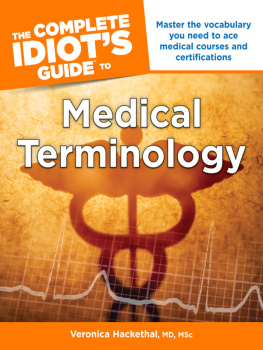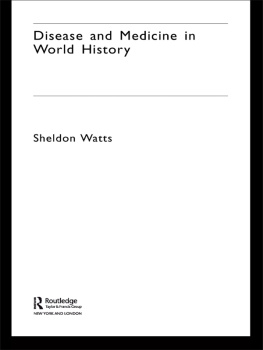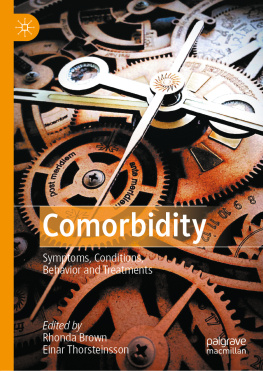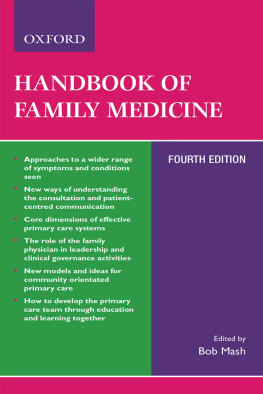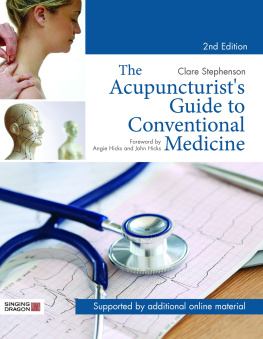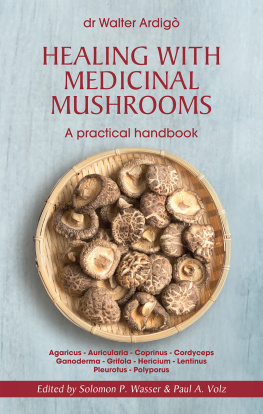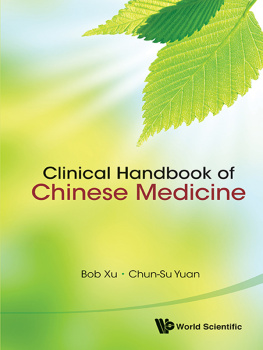John Ball - Understanding Disease: A Health Practitioners Handbook
Here you can read online John Ball - Understanding Disease: A Health Practitioners Handbook full text of the book (entire story) in english for free. Download pdf and epub, get meaning, cover and reviews about this ebook. year: 2008, publisher: Ebury Publishing, genre: Religion. Description of the work, (preface) as well as reviews are available. Best literature library LitArk.com created for fans of good reading and offers a wide selection of genres:
Romance novel
Science fiction
Adventure
Detective
Science
History
Home and family
Prose
Art
Politics
Computer
Non-fiction
Religion
Business
Children
Humor
Choose a favorite category and find really read worthwhile books. Enjoy immersion in the world of imagination, feel the emotions of the characters or learn something new for yourself, make an fascinating discovery.

Understanding Disease: A Health Practitioners Handbook: summary, description and annotation
We offer to read an annotation, description, summary or preface (depends on what the author of the book "Understanding Disease: A Health Practitioners Handbook" wrote himself). If you haven't found the necessary information about the book — write in the comments, we will try to find it.
This book explains with a minimum of jargon how diseases start, what that main symptoms are and how they may affect us.
It is intended as a concise guide for those working in alternative medicine and also for those without a medical background who want a clearer understanding of the ways in which common illnesses develop and the terms used to describe them.
Understanding Disease: A Health Practitioners Handbook — read online for free the complete book (whole text) full work
Below is the text of the book, divided by pages. System saving the place of the last page read, allows you to conveniently read the book "Understanding Disease: A Health Practitioners Handbook" online for free, without having to search again every time where you left off. Put a bookmark, and you can go to the page where you finished reading at any time.
Font size:
Interval:
Bookmark:
UNDERSTANDING
DISEASE
This eBook is copyright material and must not be copied, reproduced, transferred, distributed, leased, licensed or publicly performed or used in any way except as specifically permitted in writing by the publishers, as allowed under the terms and conditions under which it was purchased or as strictly permitted by applicable copyright law. Any unauthorised distribution or use of this text may be a direct infringement of the author's and publisher's rights and those responsible may be liable in law accordingly.
ISBN 9781409021568
Version 1.0
www.randomhouse.co.uk
3 5 7 9 10 8 6 4 2
Text 1990 John Ball
This electronic book is sold subject to the condition that it shall not by way of trade or otherwise, be lent, resold, hired out, or otherwise circulated without the publisher's prior consent in any form other than that in which it is published and without a similar condition including this condition being imposed on the subsequent purchaser
First published in the United Kingdom in 1990 by
Blackdown Publications
Revised and updated edition published in 1990 by
The C.W. Daniel Company Ltd
This edition published in 2005 by Vermilion,
an imprint of Ebury Publishing
Random House UK Ltd.
Random House
20 Vauxhall Bridge Road
London SW1V 2SA
Random House Australia (Pty) Limited
20 Alfred Street, Milsons Point, Sydney,
New South Wales 2061, Australia
Random House New Zealand Limited
18 Poland Road, Glenfield, Auckland
10, New Zealand
Random House South Africa (Pty) Limited
Isle of Houghton, Corner of Boundary Road & Carse O'Gowrie,
Houghton 2198, South Africa
Random House Publishers India Private Limited
301 World Trade Tower, Hotel Intercontinental Grand Complex,
Barakhamba Lane, New Delhi 110 001, India
The Random House Group Limited Reg. No. 954009
www.randomhouse.co.uk
A CIP catalogue record for this book is available from the British Library
ISBN: 9781409021568
Version 1.0
Culled from his training and experience in orthodox practice (Dr Ball was a GP from 197081), and also from teaching at various schools and colleges of complementary medicine, the author has written a book which addresses the former from the standpoint of the requirements of the latter. Its primary purpose is to describe pathological processes in the language of orthodoxy while offering explanations in simple and clarifying terms. It is a book of immense utility. Those who have come to health care through a route other than medical school will appreciate the value of a systematic analysis of disease, and through familiarity with the language of pathology be able to communicate with their medical colleagues. There is no doubt in my mind that there are only gains to be made out of bringing these two apparently disparate approaches into communion. The process is, I believe, similar to any 'marriage of opposites', a necessary step in the direction of wholeness and maturity.
The medical doctor, traditionally observing the tenets of his Hippocratic Oath, is not permitted to divulge medical knowledge. The times are changing in this respect as well as in respect of acknowledging the limitations of this system of medicine. The treatment which it offers is often suppressive, usually productive of iatrogenic side-effects and leads to various long term though often unacknowledged consequences.
The premise upon which most forms of complementary medicine stand is that the symptoms are the language by which the diseased organism finds expression. They are the outward evidence of the internal disorder, providing the healer/physician with a true guide, like Dante's Virgil, a lead into the hidden interior wherein the disturbance is centered. Furthermore, the symptoms are understood to represent the best possible adaptation which the organism can muster in order to save itself from a deeper, more permanent and more destructive form of disturbance. From this point of view it is self evident that any form of treatment which suppresses the symptoms will inevitably lead to the eventual intensification of the suffering.
However, this conclusion is usually not drawn because it is assumed that the disease is an entity in itself, a unique syndrome of symptoms, independent of the sufferer and therefore dealt with as if it were an enemy attacked and destroyed. This view closes the mind to further possibilities, because once the symptoms have been extinguished it is deemed a priori that the disease has been vanquished. Another reason for the lack of a true interpretation of the disease is due to the habit of compartmentalising the information which is received from the patient. Spirit, emotions, mind and body are each treated as though separate; even the physical body is subdivided and specialists consulted whose role is to examine, diagnose and eventually treat the parts.
Practitioners of complementary medicine tend to emphasise a synthetic and embracing philosophy of healing; it is because of this bias that they need to pay particular attention to the paradigm of Western medicine, itself an outcome of the reductionist and casual model of reality. This model is powerful because the manipulation of concepts leads to mastery of matter. However, mind may be divorced from feeling in the interest of expediency. This unilateral view is responsible for much mischief, for feeling associates while reason isolates. Suffering is a common concomitant of civilisation; its alleviation may be sought through an awareness of soul processes and the reconnection to the spiritual heart, the feeling centre of our life's purpose. Having made this statement it must nonetheless be born in mind that the great insights of science may be used for the benefit of man, no less in the field of healing. Medical science, with its store of observation, the accumulated evidence of centuries of recording and correlation contains testimony to both the miracle of life and the tragedy of disease. It is a description of the physical field within which we find ourselves. Unlike the treatment which is offered on the basis of dubious premises, the description of the body and the pathology it is heir to cannot be refuted.
Misha Norland.
This book has evolved from several years of lecturing and discussing the often controversial topic of disease with homoeopaths, osteopaths, herbalists, acupuncturists and other healing professionals. Each of these disciplines has its own map of the human mind and body, and the ills which befall them, and most recognise that to try to construct a single all-encompassing model describing the human condition is to attempt the impossible, so an understanding of different viewpoints is needed for the complete picture. Indeed the resurgence of interest in alternative methods of pursuing health is largely due to the emphasis which science has placed on disease processes, to the point where the patient and his or her suffering has been supplanted.
Any realistic approach to illness must include an objective appraisal of the dysfunction of the body (pathology), an understanding of how the patient sees the problem (empathy) and a philosophy of diagnosis and treatment which may involve a wide range of perspectives and skills. What follows is an attempt to walk a tightrope between knowledge and understanding, so that the science of pathology and all its clinical manifestations becomes comprehensible without the dubious necessity of surrounding oneself with a fortification of information for its own sake, which is as able to erect barriers as destroy them. Hence the book is hopefully not a catalogue of diseases but an appraisal of the disorders likely to be seen in the average working life of a practitioner. Rare diseases hold the same sort of fascination for medical authors as rare birds do for birdwatchers and most medical texts give a disproportionate amount of consideration to once-in-a-lifetime problems. This may mean that some readers will feel short-changed by the absence of parathyroid disorders for example, but the line has to be drawn somewhere, and those conditions affecting less than 1 in 20,000 of the population have been ignored or only mentioned in passing. If the core of medical science is understood the patient with a rare disease can be pursued in standard texts.
Font size:
Interval:
Bookmark:
Similar books «Understanding Disease: A Health Practitioners Handbook»
Look at similar books to Understanding Disease: A Health Practitioners Handbook. We have selected literature similar in name and meaning in the hope of providing readers with more options to find new, interesting, not yet read works.
Discussion, reviews of the book Understanding Disease: A Health Practitioners Handbook and just readers' own opinions. Leave your comments, write what you think about the work, its meaning or the main characters. Specify what exactly you liked and what you didn't like, and why you think so.





